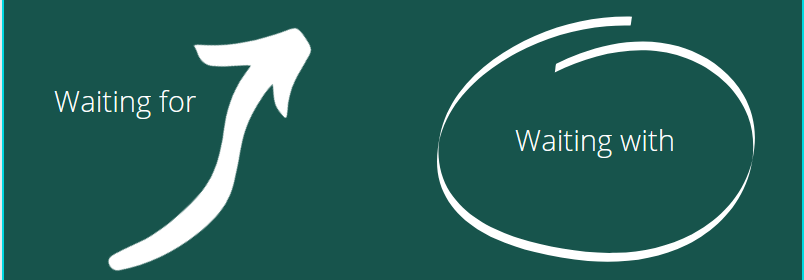At the end of 2018, I was challenged to think about waiting (you can see it here). I had no idea of how premonitory that would be. At that time, I argue that it could be fruitful to think beyond the «waiting for» perspective. My aim was trying to figure out how «waiting with» could change our experience of waiting. We live in a society that depicts itself as always in movement, 24/7 as something good. We got the imaginary that if we don´t move, we get stuck. Movement, speed, motion… all mottos of our time. We live projecting forward, the future as the most important time. Doing things, or not doing them, for the sake of the future, we keep on investing for the future… This, often individualistic, linearly progressive inclination prevents us from looking around, for inhabiting the present.
 However, the possibility of “waiting with” is increasingly becoming not accessible for most people, as more and more we are forced to engage in what I call «stressful waiting». In a sort of alert stasis, many people -being asylum seekers on-premises waiting to file their asylum claim, migrants waiting for the right time to bodily cross the border, unemployed workers waiting for the phone to call- live in a state of «vigilant immobility». Long waiting periods alternated with short windows of opportunity demanding an immediate response. It creates the need to be in a state of constant alert while waiting, with no information about when or how the chance to act or move is going to arrive, or even if it will ever come up. The temporal horizon is variable, running from hours to years (in some cases comprising even more than one lifetime).
However, the possibility of “waiting with” is increasingly becoming not accessible for most people, as more and more we are forced to engage in what I call «stressful waiting». In a sort of alert stasis, many people -being asylum seekers on-premises waiting to file their asylum claim, migrants waiting for the right time to bodily cross the border, unemployed workers waiting for the phone to call- live in a state of «vigilant immobility». Long waiting periods alternated with short windows of opportunity demanding an immediate response. It creates the need to be in a state of constant alert while waiting, with no information about when or how the chance to act or move is going to arrive, or even if it will ever come up. The temporal horizon is variable, running from hours to years (in some cases comprising even more than one lifetime).